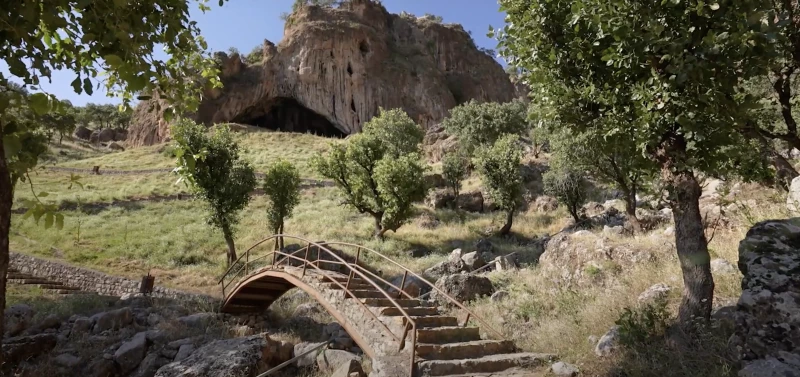ERBIL, Kurdistan Region of Iraq - Capturing three iconic Kurdish symbols, woman, horse, and fire, in an image of a Kurdish woman on horseback circling a Newroz fire, Farbod Bavehie from Iranian Kurdistan (Rojhelat) immortalized the moment on camera, earning first place in a UNESCO photography competition with what he described as “a symbol of Kurdish life and freedom.”
“Many photographers were there trying to capture the moment, but I was one of the few who managed to photograph the Kurdish woman as she circled around the Newroz fire,” Bavehie told The New Region on Thursday, adding that the win has strengthened his commitment to representing Kurdish culture to the world.
UNESCO declared Bavehie, from Iran's Saqqez, as the winner of the seventh edition of the Youth Eyes on the Silk Roads International Photo Contest. He recounted the moment he found out about his victory. "They called me from France, UNESCO, and they told me to send my information," he said, describing it as a breathtaking experience. The UNESCO representative told him that "one of the pictures has made it to the final stage of the international photo contest of the UNESCO competition and achieved first place."
"My life has changed from before and after the UNESCO contest," Bavehie said, stressing that he is now taking photography even more seriously to gain more expertise in his field and working on new projects.
"Now, as a Kurd that has won this prize, I see myself more responsible as a Kurd to represent our culture to the world and preserve it," he said.
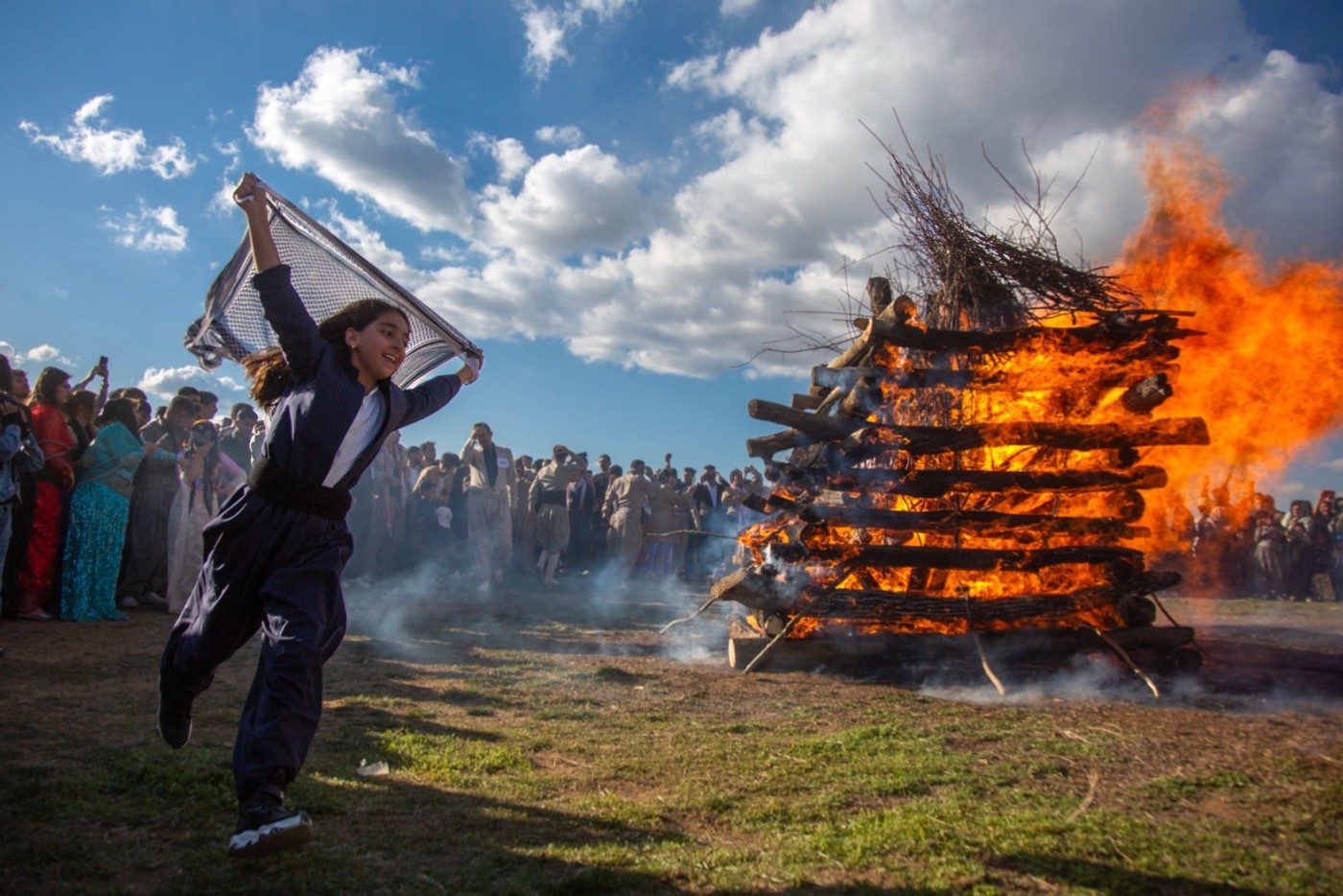
Photo: Farbood Bavehie
Bavehie has spent many years capturing Kurdish life and culture on camera. He has earned international recognition with exhibitions and awards from platforms such as Vogue Italia, UNESCO, URBAN Photo Awards, and the International Photography Awards.
He noted that the theme of the UNESCO photography competition changes each year. This year’s edition focused on “Women, Guardians of Silk Roads Heritage,” inviting participants to highlight the vital role of women in preserving and transmitting the shared cultural heritage of the Silk Roads.
Bavehie recalled the moment he captured the winning image. "It was a really big crowd in Cheshmider. There were Kurds from all over Iran, from Ilam, Kermanshah, and all other neighboring cities for the Newroz celebration, which is one of the oldest celebrations that has been celebrated by the Kurds, and it takes place every year," he said.
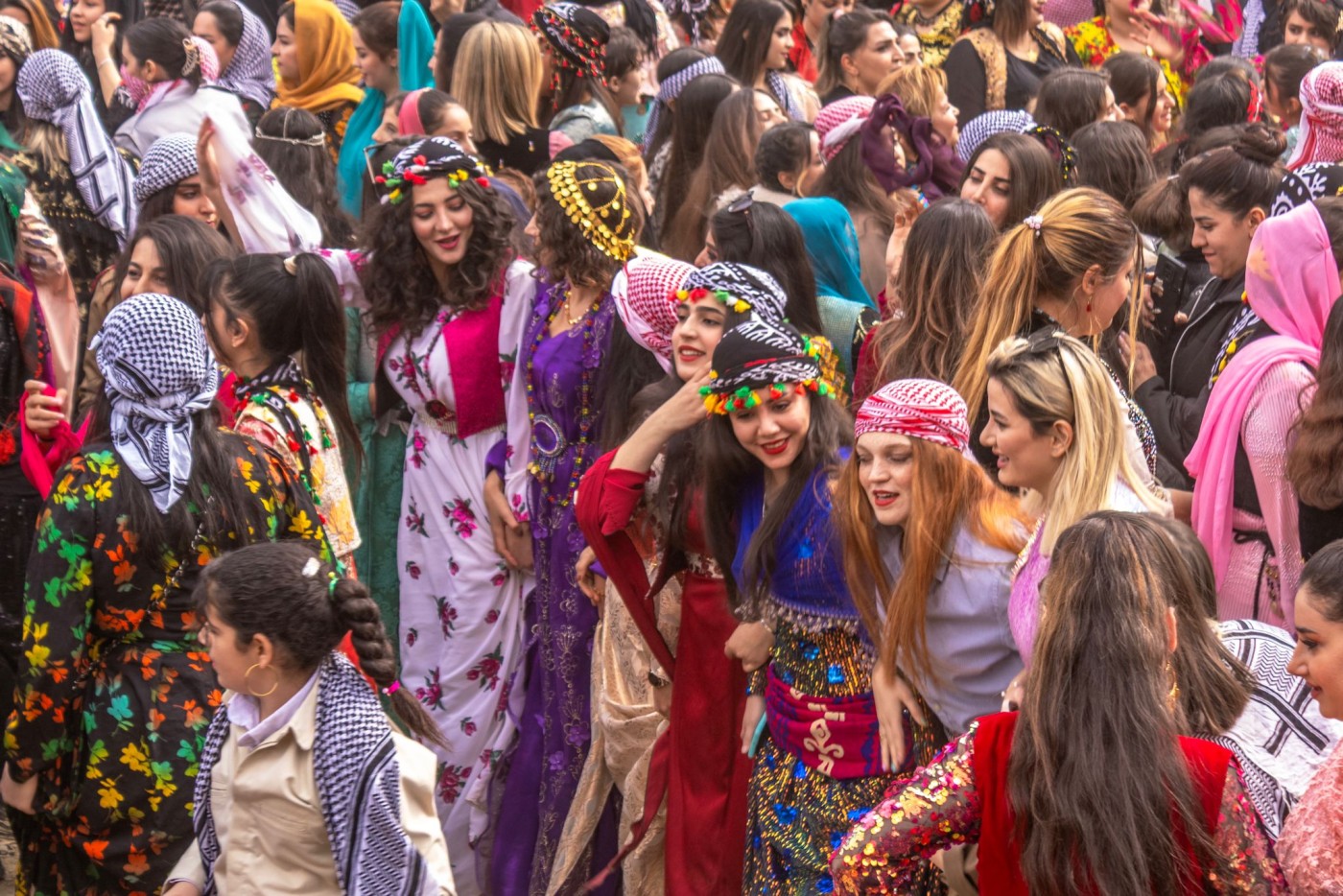
Photo: Farbood Bavehie
"Many photographers were there trying to capture the moment, but I was one of the few who managed to photograph the Kurdish woman on horseback as she circled around the Newroz fire, a very difficult task. At the moment I took the shot, the horse was charging toward us at high speed, forcing many photographers to run away. I, however, trusted the process, held my ground, and captured the image, even though it was quite risky."
The Kurdish photographer immortalized the moment, with his picture showing the taciturn Kurdish woman circling the blaze under the awe-struck eyes of crowd gathered for Newroz festivities.
Newroz marks the first day of spring and is celebrated with great enthusiasm by Kurds in Rojhelat who come together in large crowds sporting Kurdish attire, particularly the Jamaneh and Khaki clothes.
"Women in Kurdish culture are a symbol of motherhood and connection to the land, and the horse is also a symbol of freedom and bravery."
Emphasizing the combination of the three symbols, the woman, the horse, and the fire, in the picture, Bavehie expressed his admiration for the scene. “If we look at these two symbols together with fire, it's a symbol of renewal and struggle," he said, describing a great part of Kurdish culture and history with what he captured with his lenses.
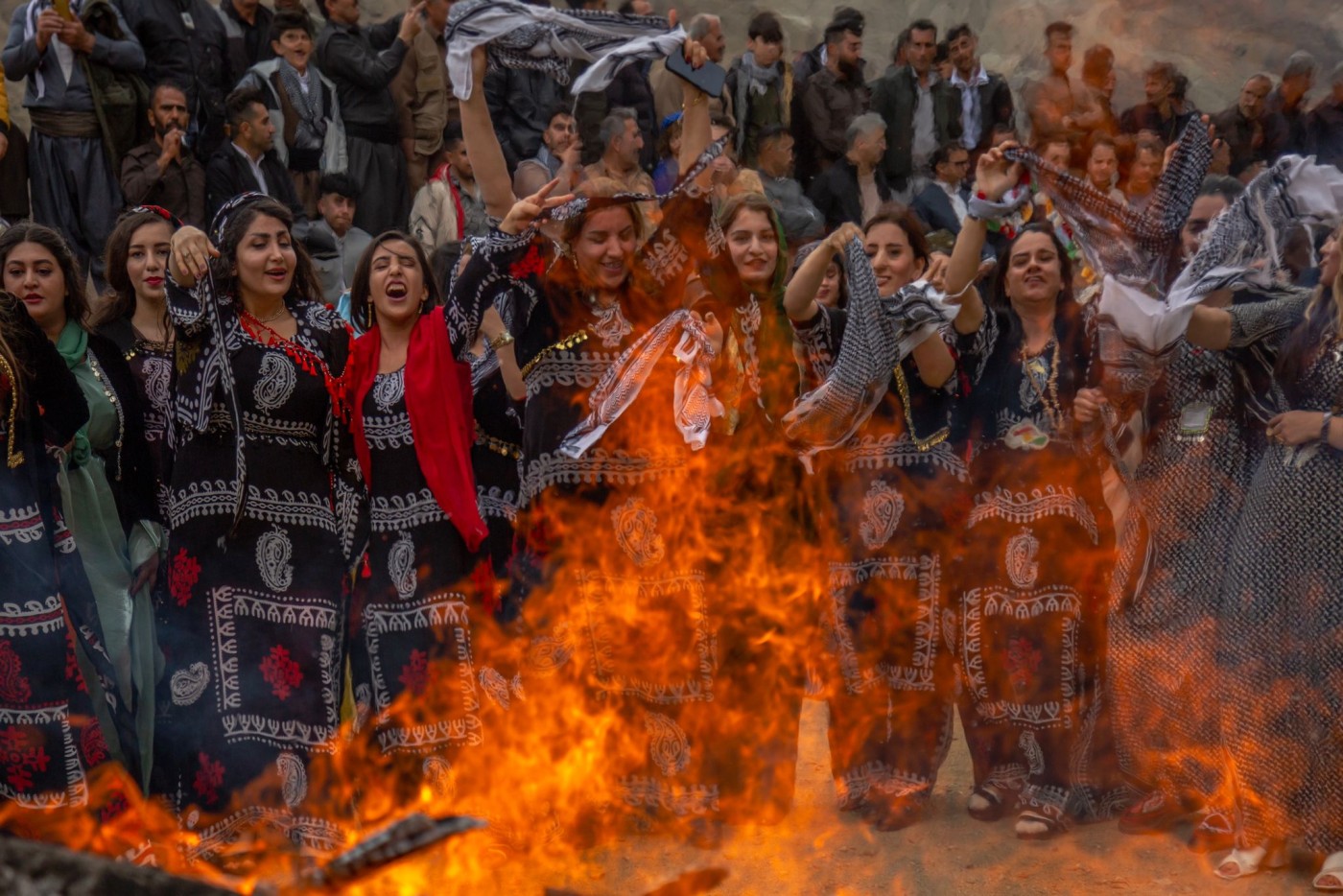
Photo: Farbood Bavehie
"I wanted to reflect the Kurdish culture in that picture, which always carries the message of freedom, friendship, peace, and unity; it also reflects the strength of Kurdish women in society."
In Kurdish culture, the horse is a powerful symbol of freedom, strength, and bravery, long serving as a companion in struggles and battles.
Bavehie said that he has been working on a project to preserve the Newroz rituals in many Kurdish-inhabited cities and villages in Rojhelat. He has also worked on a project portraying elderly Kurdish men in traditional attire, highlighting their wrinkles as a cultural feature that is disappearing among younger generations due to different lifestyles and plastic surgery.
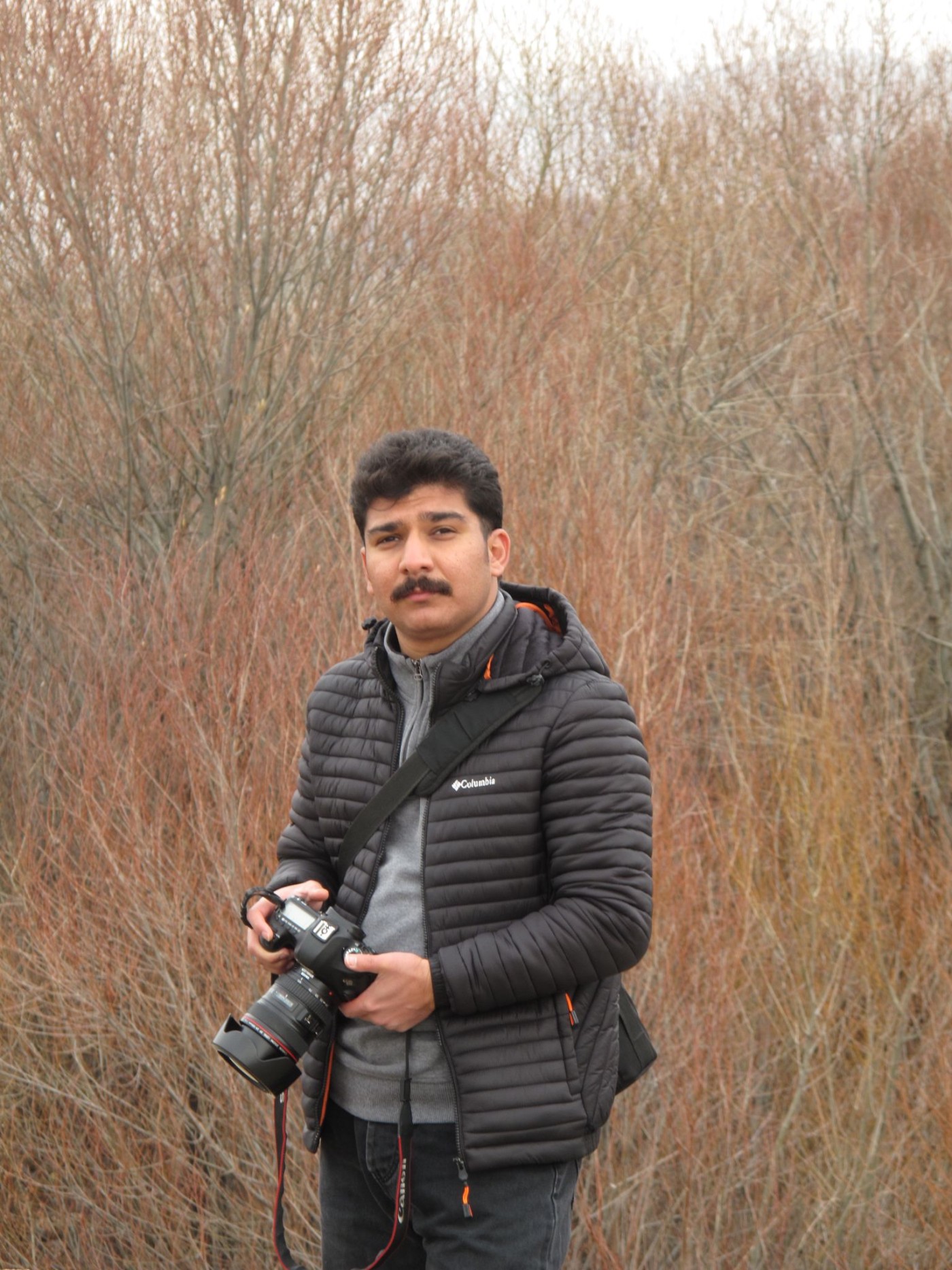
Farbood Bavehie


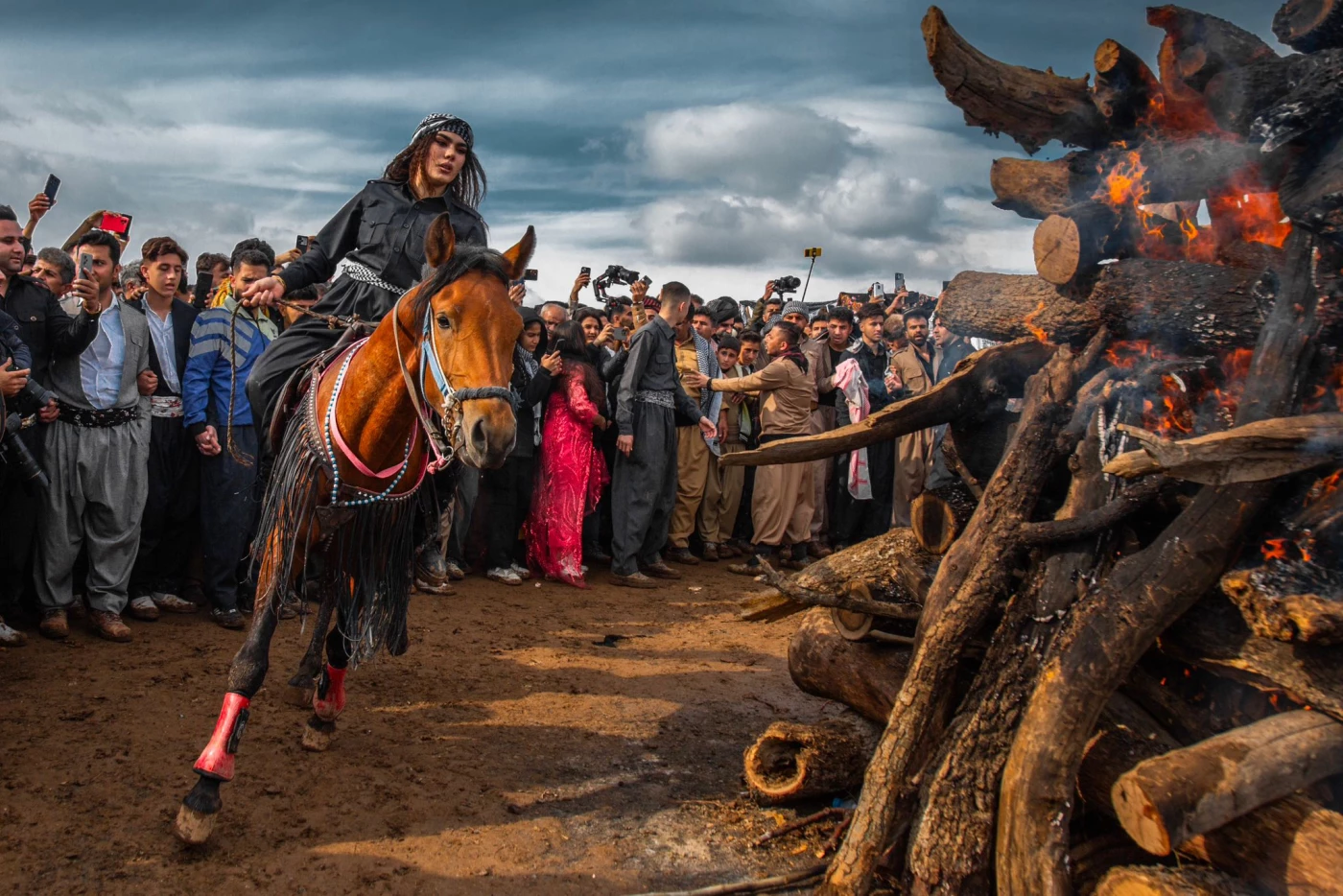
 Facebook
Facebook
 LinkedIn
LinkedIn
 Telegram
Telegram
 X
X
